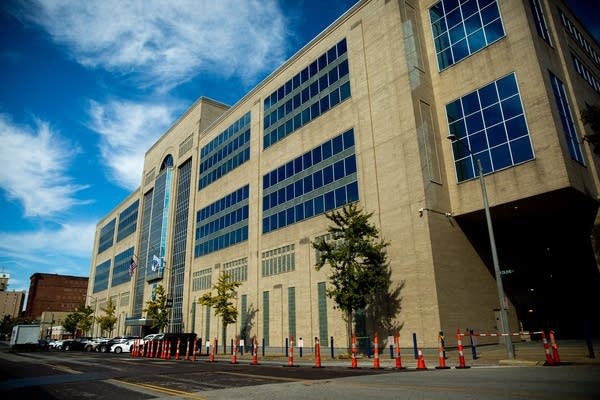St. Louis police data: Nearly 60% of homicides committed since 2017 are unsolved
Newly released data reveals no resolution for the families of hundreds of homicide victims. Police refused to release homicide clearance data, so we sued to find out.

Nearly 60% of homicides that occurred in the city of St. Louis since 2017 have gone unsolved, according to data provided by the St. Louis Metropolitan Police Department. And even though the department's clearance rates improved in recent years, more than 750 of the murders which occurred since 2017 remain unsolved.
The figures are striking for a city with one of the highest homicide rates in the nation.
“St. Louis, historically, has been a little lower than average for major cities in clearing homicides,” said Thomas Hargrove, chair of the Murder Accountability Project. “The bad news is the rest of the country has been catching up to that pattern.”
APM Reports and St. Louis Public Radio analyzed homicide records from 2017 through July to better understand how often and how quickly police closed cases over that time period. Police classify a case as closed or cleared when an arrest is made or when a suspect has been identified but cannot be apprehended because of exceptional circumstances such as their death.
The news organizations analyzed each year's homicides to see how many cases were closed and how many remain unsolved. That differs from the FBI’s calculation of clearance rates, which divides the number of homicides closed — no matter when the incident occurred — by the number of homicides from that year. The FBI’s method, while useful for some purposes, can result in annual clearance rates over 100%.
The analysis comes after a multiyear battle with the police department over public access to clearance records. The news organizations first requested the data in 2020. Although the police department had previously provided similar records to The Washington Post, it refused to release the updated information to APM Reports and St. Louis Public Radio. With the help of Washington University's First Amendment Legal Clinic, APM Reports sued the department in 2021.
As part of a legal settlement reached last month, the city agreed to release homicide records dating back to 2010. Police released information this month that detailed specific clearance outcomes for homicides occurring from 2017 through July 5, 2023. The settlement also requires the city to release additional records in August.
Officials with the St. Louis Metropolitan Police Department did not respond to an interview request or written questions for this story to discuss the data.
SOURCE: St. Louis Metropolitan Police Department
Homicide cases ‘stacking up more and more and more’
The percentage of unsolved murders, which approached 70% in 2019, has improved in recent years with police closing roughly half of the cases from 2021 to the present. And while police officials are celebrating that success, a wider look at the data shows a darker picture.
There have been 1,337 murders in the city since 2017, excluding exceptions such as self-defense and killings by law enforcement. More than half of those murders remain unsolved.
Those open cases have added stress to a homicide division that is struggling to clear the backlog while also picking up an average of about 200 new cases a year.
Joe Steiger, the business manager for the St. Louis Police Officers’ Association, said in an interview earlier this year that increasing caseloads have demoralized the roughly three dozen members of the city’s homicide division. “You're stacking up more and more and more,” he said.
Steiger said homicide investigations are complex and take time to resolve. For this reason, there will be a higher number of recent homicides that are classified as unsolved because police haven’t had as much time to investigate. Still, the data shows police make most of their closures in a short amount of time.
Of the homicides that were committed since 2020, half of the closed cases were resolved within 15 days of the incident. Seventy-five percent were wrapped up in a little over two months. Experts say the findings highlight the need for detectives to act quickly once a homicide happens.
“The colder the case, the less likely that case is ever to be resolved,” the Murder Accountability Project’s Hargrove said. “Don't assume that you'll be able to clean up inadequate investigations weeks or months later. It just doesn't work like that.”
The records also show a massive racial disparity among homicide victims. Black victims make up around 90% of those murdered since 2017. The data also shows that police are closing cases involving white victims at a higher rate. Police closed 56% of the cases involving white victims since 2017 while closing just 40% for Black victims, according to the city’s data.
Megan Green, the president of the St. Louis Board of Aldermen, is one of several city officials who say police can close more cases if there’s greater engagement with a community that has grown distrustful of police.
“If they don’t trust law enforcement to come forward and be able to talk about what they know, then it’s very difficult to solve those crimes,” she said.